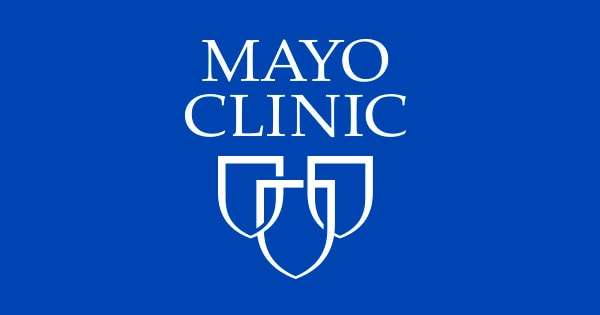A muscle knot, also called a trigger point, is an area of tense muscle. It develops when muscle fibers tighten and contract, even when the muscle isn’t moving.
Your neck is especially prone to muscle knots. That’s because many daily activities, like texting on a phone or working on a computer, can take a toll on the muscles in your neck. Knots in your neck can also form due to physical inactivity and emotional stress.
Because muscle knots often hurt, it may feel uncomfortable to move your neck. Fortunately, simple self-care measures, like massages and stretching, may help you find relief.
Here’s a look at seven easy ways to help relieve a painful knot in your neck. And, if you want to know what causes these pesky knots and when you should see a doctor about them, we’ve got that covered, too.
What exactly are knots in the neck?
While muscle knots can form anywhere in your body, your neck is one of the most common spots. A knot can affect most parts of your neck, including the:
- base of your skull
- back of your neck
- side of your neck
If you have a knot in your neck, it means some of the muscle fibers in your neck are continually contracting. This can cause neck pain that feels dull, achy, or sharp. The pain might occur at the knot or in a nearby area, like your shoulder or arm.
Other symptoms of a knot in your neck often include:
- a hard, sensitive bump
- tenderness
- tightness
- headaches
Self-care treatments
The good news is that with the right self-care treatments, you may be able to relieve a knot in your neck, along with the pain and tension that comes with it.
Here are seven simple ways to get the upper hand with a painful neck knot.
1. Trigger point self-massage
To loosen a muscle knot, do a trigger point self-massage. This involves pressing the knot to relax tight muscle fibers.
Here’s how to do it:
- Place your fingers on the knot.
- Apply firm pressure for 5 to 10 seconds. Release.
- Repeat for 3 to 5 minutes, up to 6 times a day. Repeat daily.
2. Heat or ice
Applying heat or ice may ease the muscle pain a knot causes. Ice can help reduce inflammation in and around the knot. Heat may help soothe and relax the muscles. Use whichever treatment brings the most relief, or try alternating between the two.
When using this remedy, make sure you wrap the heat or ice pack in a towel or cloth to protect your skin. Apply the heat or ice pack to the sore area for 15 to 20 minutes at time. Repeat several times a day.
You can try using a:
- heating pad
- hot water bottle
- warm or cold compress
- ice pack
3. Nonsteroidal anti-inflammatory drugs (NSAIDs)
Nonsteroidal anti-inflammatory drugs (known as NSAIDs for short), are pain-relieving medicines that are available over the counter (OTC). They work by reducing inflammation, which controls pain and swelling.
Examples of NSAIDs include:
- aspirin
- ibuprofen (Advil, Motrin)
- naproxen (Aleve)
Though NSAIDs can manage muscle knot pain, the relief is temporary. They work best in combination with trigger point massage and stretching.
4. Shoulder shrugs
The shoulder shrug is an exercise that targets your neck, shoulders, and spine. It involves gentle shoulder movements, which relax the surrounding muscles.
Share on Pinterest
To do this exercise:
- Sit or stand up straight.
- Inhale. Move your shoulders up and toward your ears. Pause.
- Exhale. Drop your shoulders back to the starting position.
- Repeat 2 to 3 sets of 10 repetitions.
5. Head-to-hand neck release
This stretch relieves neck tension by lengthening the muscles in your neck. It also loosens your chest and biceps, making it a great upper body stretch.
To do this stretch:
- Sit in a chair or in a cross-legged position on the floor. Straighten your back.
- Move your left ear to your left shoulder. Simultaneously raise your right arm up alongside your body to shoulder height. Point your thumb upward and spread your fingers.
- Put your left hand on your head, with your fingers spread downward toward your right ear. Apply light pressure as you gently move your left ear closer to your left shoulder.
- Pause for a few moments, then switch sides and repeat.
6. Cat-cow
Cat-Cow is a classic yoga pose that stretches the neck and back muscles. It involves flexing and extending your spine, which helps posture and mobility.
Share on Pinterest
To do this stretch:
- Begin on all fours. Place your hands under your shoulders and your knees under your hips.
- Inhale. Drop your stomach down, lifting your chin to the ceiling.
- Exhale. Round your back, moving your chin toward your chest.
- Repeat for 1 minute.
7. Cobra pose
Like Cat-Cow, Cobra Pose helps with improving posture. It works by opening the chest muscles, which counteracts slouched shoulders. The lengthening motion of this move also helps relieve back and neck pain.
Share on Pinterest
To do this stretch:
- Lie down on your stomach. Place your hands under your shoulders, fingers facing forward.
- Gently squeeze your glutes. Push up from the ground, slowly raising your chest upward. Make sure to keep your pelvis pressed into the floor throughout the movement.
- Hold for 10 seconds. Relax and return to the starting position.
What causes knots in your neck?
There are many possible causes of knots in your neck muscles. Some of the most common causes include:
- Poor posture. If your neck and back are constantly rounded, it may cause the surrounding muscles to tense up.
- Stress. When you’re mentally or emotionally stressed, your muscles are more likely to tense up and tighten. When you’re stressed, your breathing also tends to be more shallow. This can reduce the amount of oxygen that gets to your muscles.
- Physical inactivity. Lack of exercise may contribute to poor posture. It also increases your risk for muscle injury.
- Overuse. Repetitive movements during sports, work, or physically demanding activities may cause muscle knots. Repetitive heavy lifting may also increase the risk of a knot.
- Injury. Injuries like muscle strains or tears may contribute to knots.
- Prolonged sitting or lying. You can develop a knot after sitting or lying down for an extended period of time. It’s also common to develop a knot after sleeping in an awkward position.
When to see a doctor
If the knot in your neck doesn’t go away or gets worse, make an appointment to see your doctor. If you don’t already have a primary care provider, you can browse doctors in your area through the Healthline FindCare tool.
Also seek medical attention if you have a knot in your neck and:
- numbness or tingling in your limbs
- poor motor control
- pain that makes it hard to sleep
- persistent headaches
- blurry vision
- dizziness
- difficulty swallowing
- trouble breathing
- high fever with neck stiffness
Depending on your symptoms, your doctor will likely prescribe physical therapy. A physical therapist can provide various treatments, including:
- therapeutic massage
- stretching exercises
- electrostimulation, also known as e-stim
- trigger point mobilization
- dry needling
- ultrasound therapy
- posture education
Your doctor might also have you visit a massage therapist, chiropractor, or pain specialist.
The bottom line
If you have a knot in your neck, try massaging the area with your fingers and applying heat or ice.
Do therapeutic neck exercises, like shoulder shrugs, or stretches, like head-to-hand release and Cat-Cow. When done regularly, these moves may help relieve the pain and tension of a knot.
To prevent future knots, stay active and stretch often. If the knot keeps coming back, be sure to see your doctor or physical therapist.
Your neck muscles are so tight you could strum them likeguitar strings. But this song is definitely not music to your ears.
Advertising Policy
Cleveland Clinic is a non-profit academic medical center. Advertising on our site helps support our mission. We do not endorse non-Cleveland Clinic products or services. Policy
You’re rubbing and pushing and prodding your sore muscles –but is that actually helping? Or could you be making things worse?
With the right simple steps, your tensed-up muscles can start whistling a happier tune. Chiropractor Chad Adams, DC, explains the ins and outs of trigger point massage.
Muscle knots: A muscle freak-out
Muscle knots are those kinks in your back and the tight,ropy strands in your neck. Also known as trigger points, they are areas where yourmuscles have tensed up and refused to let go.
“A trigger point is a muscle spasm — a signal from the brain saying, I’m not sure what to do, so I’m going to freak out and be tight,” says Dr. Adams.
Trigger points form as a result of repetitive activity. That might be something like swinging a tennis racket over and over, or – for many of us – hunching over our desks and pounding the keyboard day in and day out.
“The body can endure a lot of stress, but we weren’tdesigned to do the same activity over and over, every day,” he says. “Thosetight spots are cries for help.”
Trigger point self-massage 101
So how can you get your freaked-out muscles to chill? Pressing on the muscle knots, called a trigger point self-massage, is a great place to start, Dr. Adams says. The simple pressure can help muscles relax.
Here’s how to self-massage:
- Find the tight spots (odds are you won’t have to look too hard).
- Use your fingers (or tools like foam rollers and massage balls) to press firmly into the trigger points.
- Repeat for three to five minutes, ideally as often as five or six times per day. “It needs to be part of the daily routine,” Dr. Adams says.
How hard should you push? It varies. Some people can handleintense pressure; others are a bit more … delicate (no shame). Go ahead and digin — it’s unlikely you’ll push hard enough to do any damage, Dr. Adams says.
Still, it might not feel great in the moment. “Discomfort ispart of the process,” he adds. But intense pain is not. If you feel a sharppinch or tingling, you might have an injury that goes beyond muscle tension. Inthat case, quit with the thumbs already and get yourself to a doctor.
Do knot give up: Make a change to your environment
After each mini-massage, your muscles should feel looser.Over time, regular trigger point massages can help bring longer-lasting relief.
But also think about what you can change in your environment to make your muscles happier. Could a better desk chair help your posture? Can you take breaks to stretch throughout the day?
If you’ve made those changes, but the knots keep returningfor an encore, it might be time to call in the pros. Consider seeing an expertsuch as a chiropractor, physical therapist or massage therapist.
Above all, Dr. Adams advises, pay attention.
“Too often, people ignore the signals from their bodies.Pain is the warning light on the dashboard,” he says. “Your body is telling youit’s time to make a change.”




